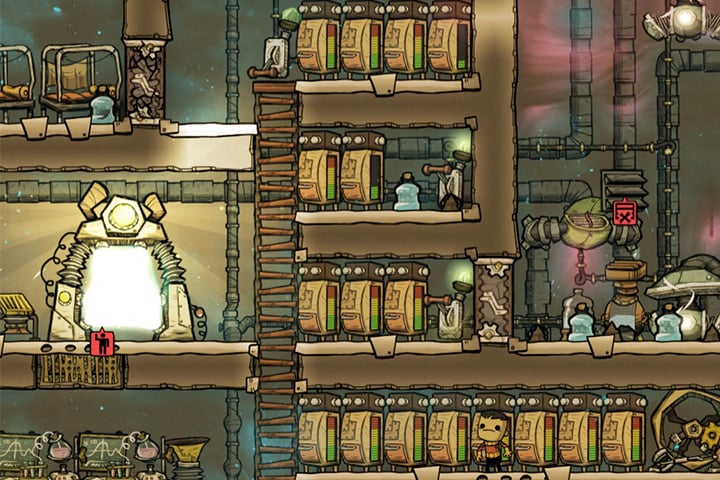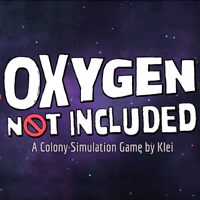Oxygen Not Included: Important Rooms
In Oxygen Not Included, planning is the key to success. Every room should be separated from each other and have a different role. It is recommended to create low-ceiling energy and resource warehouses, and high-ceiling (4-5 fields) utility rooms, so that they can hold more oxygen and manage to hold various buildings that are of different size.

Bathroom is one of the most important buildings in game. A Bathroom results in negative morale, and after breaking down/clogging it spills contaminated water. As a result, it is recommended to build it in a separate room with additional tiles at the sides, so that the contaminated water does not spill across the base. As your base increases in size, build additional bathrooms and composters so that duplicants don't have to run across the whole base. Aside from a toilet, build a shower or a washbasin to avoid the spread of bacteria.

Storage space. Here you will want to place numerous storage compactors. Thanks to this, all resources will be stored in one place. Not only will it affect the environment positively, but it will also bring order to the base. You will be the most effective when you allow for the storage of only one group of raw materials, e.g. only metals, in a given compactor. This way you will have more control over what and where is something stored. This will allow you to quickly empty the compactors from resources that you want to store elsewhere, e.g. algae closer to terrariums or deoxidizers. Do not be afraid to create a large room, over time you will have to store increasingly large quantities of resources. Remember to construct a separate storage location for poisonous raw materials, such as slime or contaminated dirt. These substances have the ability to emit toxic gases, and there is no need to deliberately contaminate the base.
The basement. A fairly loose description of the lowest location in your base, to which the heavy CO2 gas will have easy access, and will thus not interfere with the work of your colonists. It may be a simple cave, a mine near your base, or a shaft to an underground water tank. What is important is that you build your base in a way that allows gases to flow freely. Build algae terrariums or other equipment that will get rid of CO2 in your basement. There will be more information about the flow of gases in the next chapter.

Growing plants. In theory, cultivating edible crops is not a problem. The struggle begins when you have a large number of plants near the active parts of your base. Why? Growing crops involves two factors: the concentration of gas and the temperature. The first means that the gas pressure level cannot fall below a certain value, usually 150g per field. The easy thing about this is that it can be any gas. It does not have to be oxygen in its pure or even in its contaminated form. The second thing is the temperature. Every plant has a range of temperature in which it can grow and a small range of optimum temperature, in which the crops will be better. The key here is the right location for your greenhouse. Away from heat generating machines and warm air. You can create a small air circulation system, where you will cool it in one thermo regulator and let it out into the same room. You should also consider enclosing such a room with insulated tiles to keep the right temperature. Make sure to build a ration box in the vicinity and a compactor just for the seeds. Better farning tiles will require fertilizer and water supply (clean or polluted, depending on the plant). They will allow you to increase harvest efficiency, gather bigger crops, and collect more seeds.
The power grid. The production of electricity and its storage quickly evolves into the problem of emitting large amounts of heat. In the current version, high temperature influences your duplicants as well as plants and animals. Remember that too high a temperature causes stress and may lead to various diseases. Building a power plant on the opposite side of the base, placing the batteries in separate and cool rooms and creating spacious areas should mitigate this problem.
Clean and contaminated water tanks. This is a possible extra activity, but it will make your life a lot easier. It will allow you to quickly assess the amount of water and its distribution. It will facilitate transportation to the necessary machines, so that duplicates will not have to run too much. The contaminated water tank will allow for proper segregation. This way you will avoid problems resulting from mixing these two liquids and make it easier to transport them to your treatment plant.
You are not permitted to copy any image, text or info from this page. This site is not associated with and/or endorsed by the developers and the publishers. All logos and images are copyrighted by their respective owners.
Copyright © 2000 - 2025 Webedia Polska SA for gamepressure.com, unofficial game guides, walkthroughs, secrets, game tips, maps & strategies for top games.
